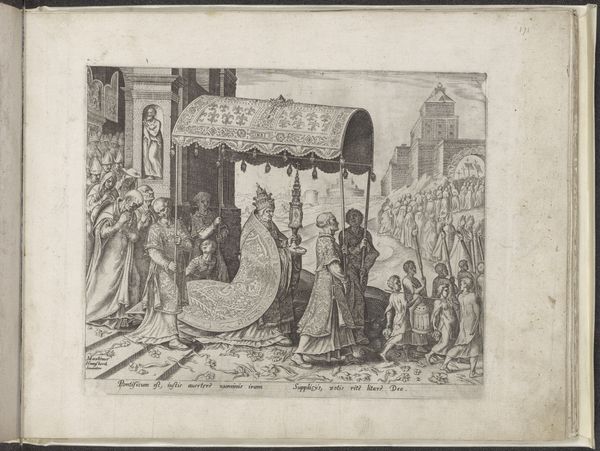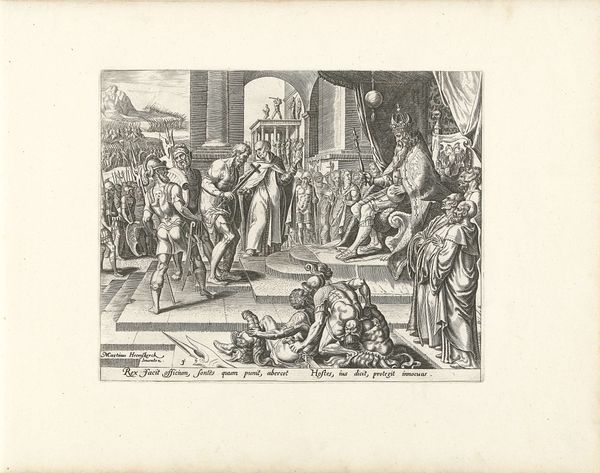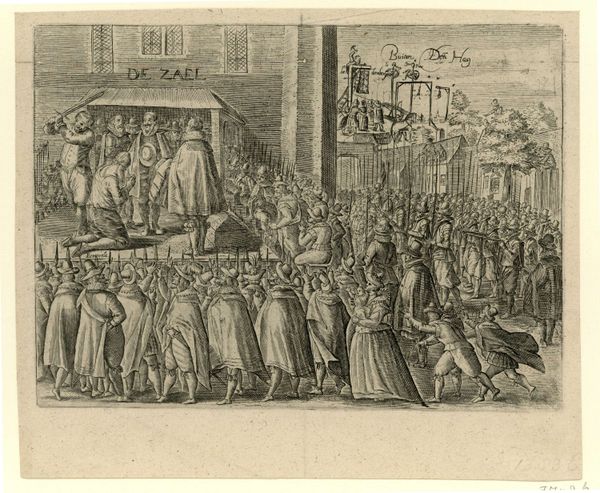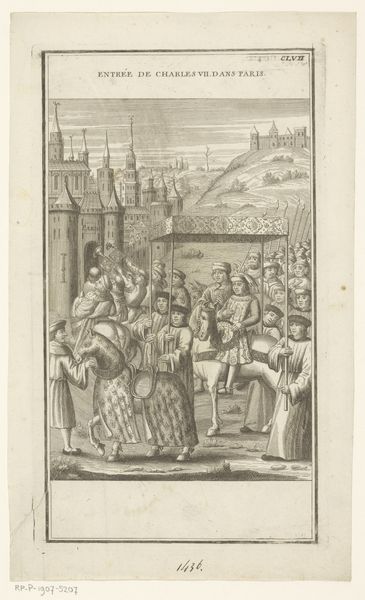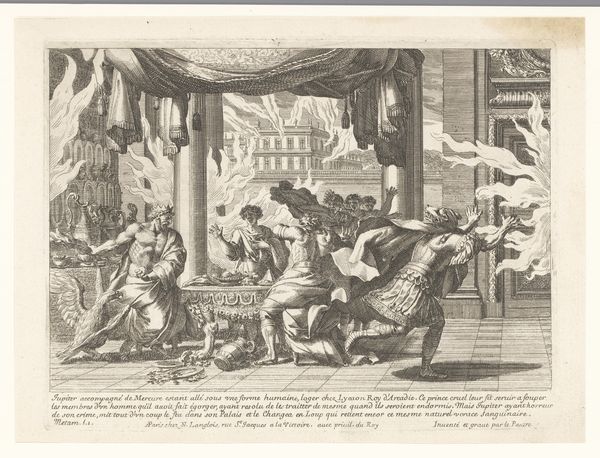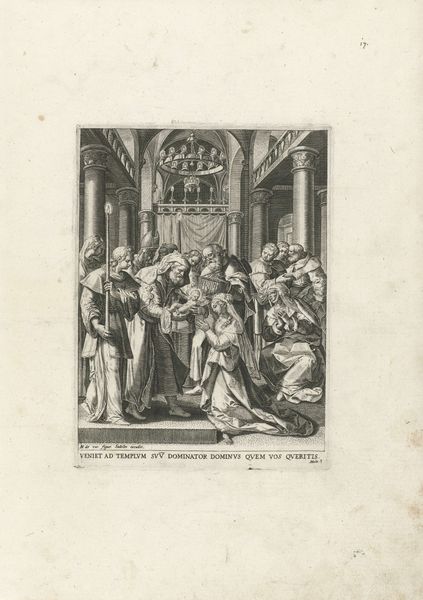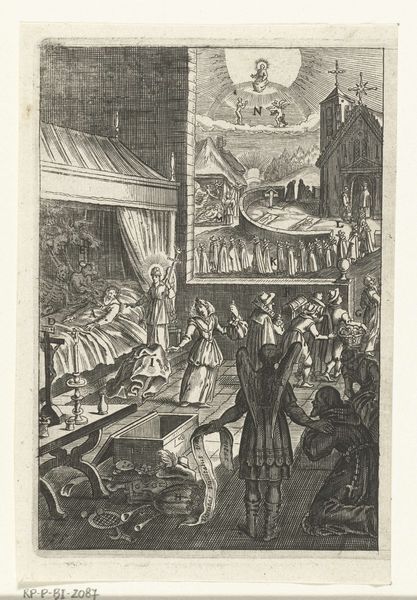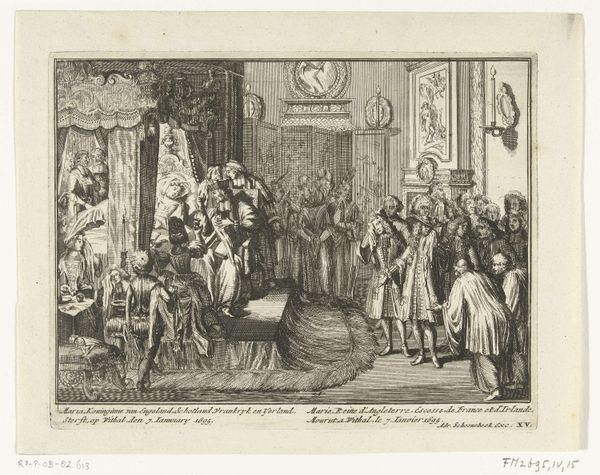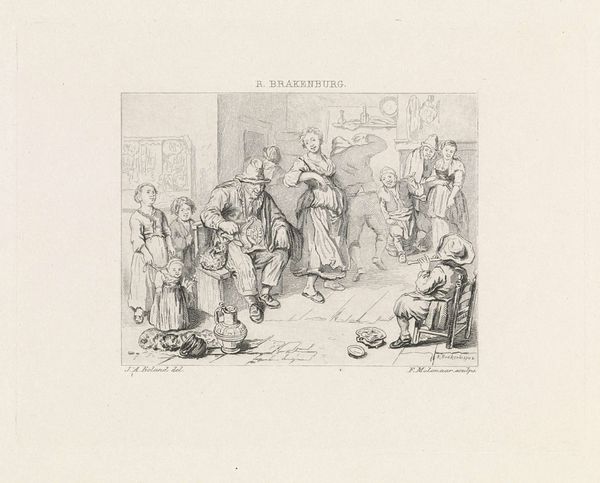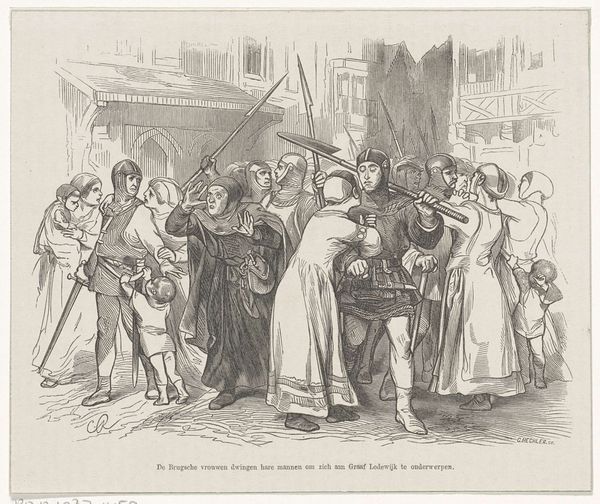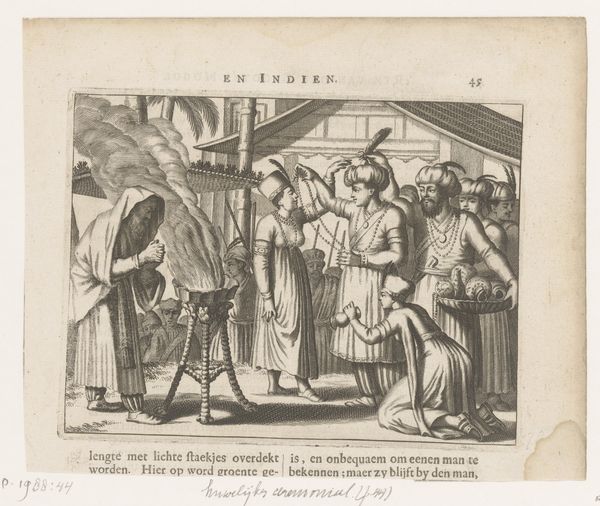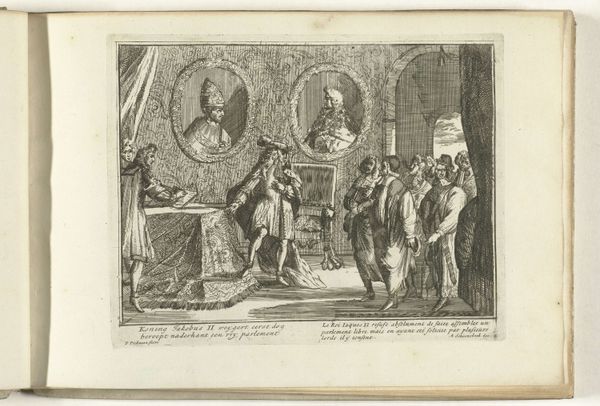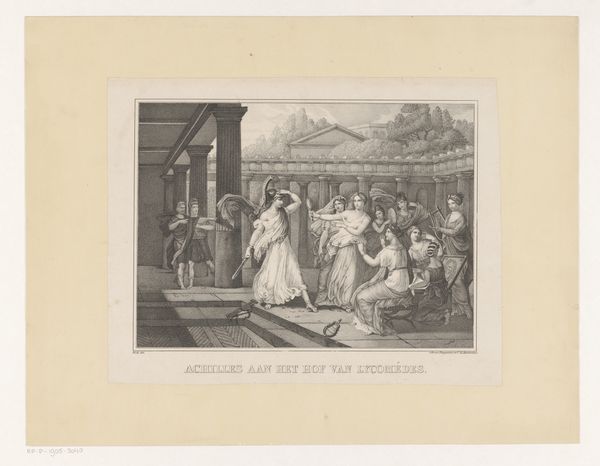
Uitvoering van de taak van de geestelijke stand door de paus c. 1565 - 1638
0:00
0:00
philipsgalle
Rijksmuseum
drawing, print, etching, ink, pen, engraving
#
drawing
#
light pencil work
#
narrative-art
# print
#
pen sketch
#
etching
#
old engraving style
#
sketch book
#
mannerism
#
figuration
#
personal sketchbook
#
ink
#
ink drawing experimentation
#
pen-ink sketch
#
pen work
#
sketchbook drawing
#
pen
#
history-painting
#
sketchbook art
#
engraving
Dimensions: height 205 mm, width 250 mm
Copyright: Rijks Museum: Open Domain
Editor: So, this is Philips Galle’s “Uitvoering van de taak van de geestelijke stand door de paus,” dating from around 1565 to 1638. It's an engraving, full of detailed figures. I am struck by the formality of it all; what does this artwork say to you? Curator: It speaks volumes about the politics of imagery during the Counter-Reformation. Galle’s work needs to be viewed in its historical context: the visual language reinforces the Catholic Church's authority. Consider how prints like this, widely distributed, served as propaganda. What do you notice about the figures surrounding the Pope? Editor: Well, there's a hierarchy. The Pope is elevated, literally, carried on a litter. Others are kneeling, showing reverence. I suppose that's intentional? Curator: Precisely. Think about the social function of art at the time. These aren't neutral depictions. They project power and affirm the Pope’s divinely ordained role. What kind of impact do you think an image like this had on the public imagination of the era? Editor: It's like a carefully constructed stage. Seeing that degree of detail in a reproduced image would’ve impressed people about the grandeur of the church at the time. The image, if it was easily produced and reproduced, would have to be influential, given the relative ease with which it was viewed compared to a fresco inside a Church, maybe? Curator: Yes, absolutely! And consider where such prints might have been displayed and what class of people may have viewed the artwork. This artwork may also be seen as part of a broader visual culture, a system for promoting the agenda of powerful elites through easily distributed artworks, and an important part of understanding the production of the church's visual identity. How does it affect your understanding knowing that it’s meant for the masses? Editor: Thinking about it that way definitely changes how I see it. It is a potent demonstration of how imagery reinforced authority. I hadn’t considered how accessible prints functioned politically back then. Curator: Indeed. It gives us a better lens to view the relationship between society and art.
Comments
No comments
Be the first to comment and join the conversation on the ultimate creative platform.
